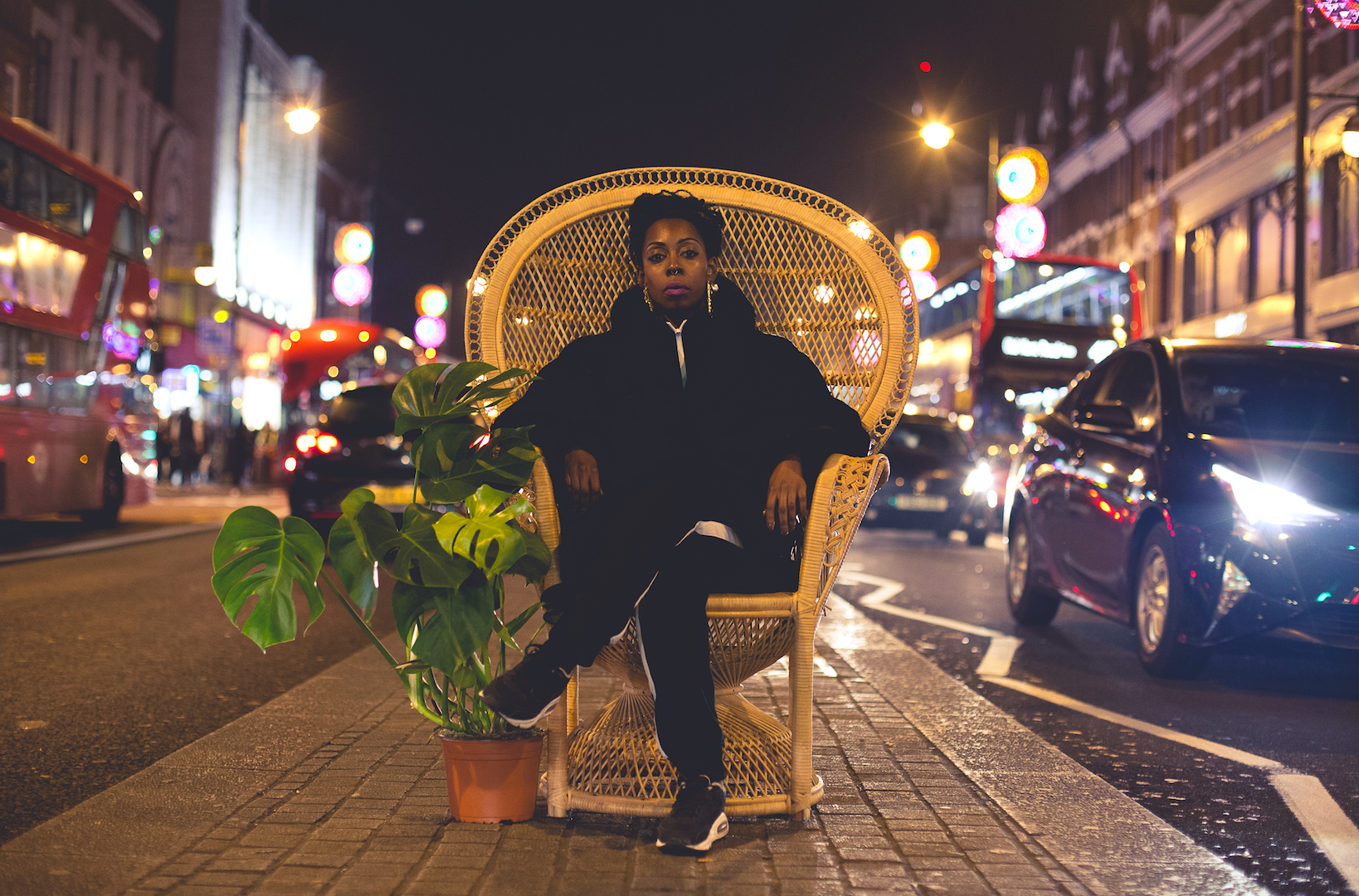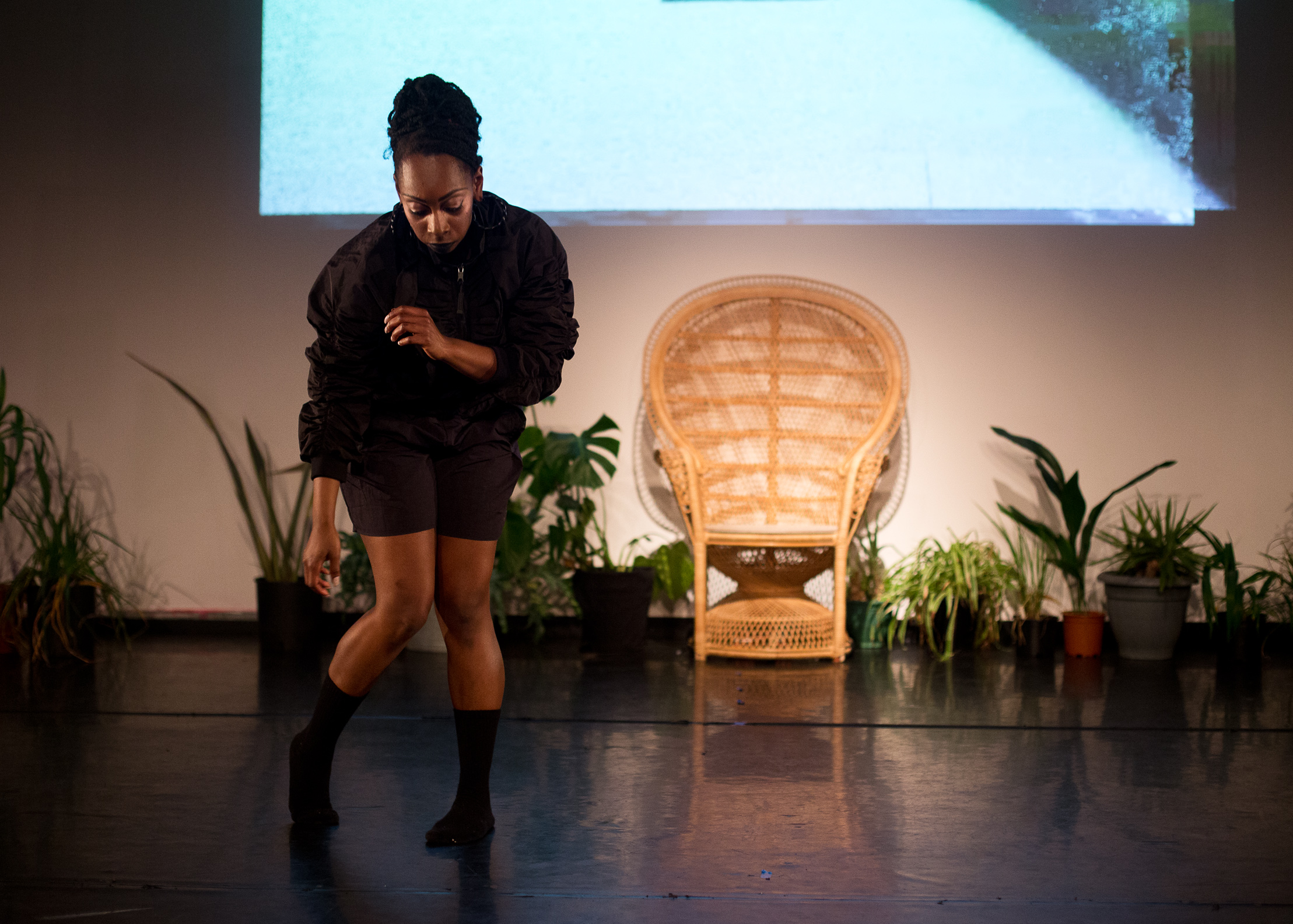
What kind of slave would I be? It’s a question that few would choose to answer, one that forces you to uneasily question those qualities that you hold dear. Maybe you are resilient, brave, honest or unafraid today, but in a time of horrors we will never understand, would you be brave enough to run? Would you have been strong enough to stay, to survive? Would you have ended your life to avoid ever being sold, halting your bloodline between continents, the sea bearing your memory?
During a visit to the Tudor Collection at the National Portrait Gallery, Zinzi Minott was confronted with a historical narrative to which the slave seemed an inconvenience; the lineage of slaves having perhaps never been considered worthy of documenting. Following this, the question, “what kind of slave would I be?” was lodged into her mind and the idea for her sixty minute dance solo which debuted at the Rich Mix last month was born.
A piece made of four sections, What Kind of Slave Would I Be? explores moments from the history of slavery and different types of slaves. From those who burned cane fields and murdered masters, to the jumpers who ended their lives before reaching the fields, all are present as Minott unearths the trauma and struggle which has marked her history.
Speaking on the inspiration for the piece, Minott recalls walking out of the National Portrait Gallery and writing down all the different types of slaves she would and wouldn’t have been and who she wanted to be, because “I can ask myself that question, that’s a real question, if I wasn’t in this day and age I would have been a slave.”
Having collated footage and images from her own life, Minott also produced a film to accompany the piece. Depicting the burning of the fields using images from her uncle’s home in Barbados and sharing footage of herself in Portland after a visit to a slavery museum, the personal, geographical and historical journeys captured within the piece make for a powerful show with lasting impact.“If I’m walking around in 2017 in my tracksuit and my air max 95s thinking about slavery, this is still relevant to my life in a serious way” she said.
Today, we are often silenced or ignored if we interrupt dominant narratives by opening up about slavery. Minott’s work speaks to how relevant it still is today, and her audience evidently shared this feeling as many were left muted, in tears, and with a deep sense of gratitude. What Kind of Slave Would I Be? presented an honest piece which opened a conversation too often buried deep both within ourselves as well as in mainstream conversation.
A conversation without words may not seem self-evident but as a dancer Minott insists “dance is fully communicative. I have never considered it inadequate or questioned how it can be used, it’s my language, it’s the language that I feel most articulate in.”
Detailing how she found herself creating this type of work, she reflects on her experiences as a queer, black, dark-skinned dancer after training at Lewisham College and later at the prestigious Laban. She states simply “I started making dance because if I didn’t make dance I wouldn’t be dancing”. A comment both on the racism and classism within dance as an industry and on Minott’s own desire to use dance to speak out: “one of the things I struggled with about Random [where I interned] is that [their] work is more aesthetically driven than it is saying anything. I knew that I didn’t want to dance about nothing, with a platform that big I want people to say something.”
Furthermore, she identifies far more as a dancer than a choreographer, for her choreographing her own work was born out of need more than anything else. “When I left dance school I wanted to find a choreographer that I loved. [But] most of the choreographers out there aren’t making work that I want to commit to giving my body too, and those that were got defunded.” Hence, Minott found herself creating her own solo work, having rejected offers of graduate jobs that would see her in all white spaces which didn’t necessarily reflect her politics.
“I don’t think I could truthfully say that I think any movement of your body, any attempt to own your own body, is ever not political.”
Making work whose subject matter immediately speaks to your politics can often lead to artists being branded as “political”, especially when their views are not considered palatable to the right-leaning white audiences that we usually consider ‘the norm’. In Minott’s eyes, “I don’t think me doing my dance is any less political than Polina Semionova continuing to head a ballet company that is entrenched in whiteness and the exclusion of black bodies”.
Watching Zinzi Minott speak so fluidly, carrying history in her muscle memory, it is clear that the language she has chosen to commit her body to is capable of communicating any story she sees it fit to tell. To witness a show as emotive as it is stilling is a gift, and Minott’s ability to deliver such work is as unlikely to wane as her passion for either the art or the issues.










